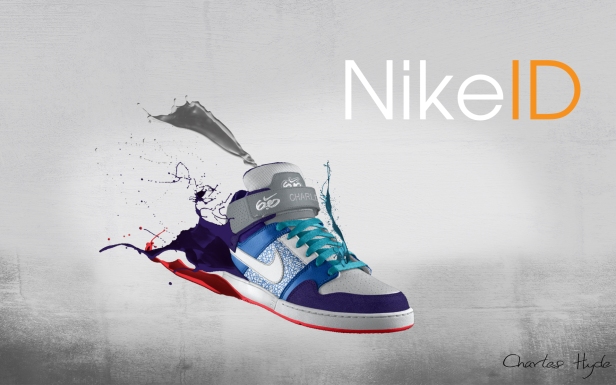Have you ever achieve something which make you feel good? What do you feel when you are capable to accomplish something? Or, is it feel good when you can edit your photo right before you post of Instagram?
Extra value?
In the last blogging, we’ve mentioned Self-determination, Competence, and Relatedness (Reeve, 2001) which is the organismic psychological needs that suited at the upper level within Maslow’s (1943) hierarchy of needs. Nowadays, in Marketing perspectives we always emphasis the importance to differentiate your company, your brand or your products in exchange for greater competitive advantages. And back in 2008, Kotler have already highlighted how crucial company need to create extra value (benefits) that can superior customer experience and satisfaction. Therefore, the question is, how to “make” your ordinary product looks different? At least, in customer’s perception.
The IKEA Effect
 Source: Advantage Voice
Source: Advantage Voice
Put aside the provision of extra customer services. If we back into psychology, the IKEA effect introduced by Norton, Mochon, & Ariely in 2012. They simply suggested that when customer was invested in labour (the production), it can inflate the product valuation, an idea of “Making-by-yourself”. Even is a same product (a Desk) with identical functional benefits, assembled by customers themselves can give them a sense of competence, just like an achievement. This is a similar concept with the effort heuristic (Kruger et al., 2004), where they suggested the higher perceived effort generate greater valuation. Take it a little bit further, this IKEA effect is not only limited at co-production product but also quite effective in customised product (Samson, 2014). Because “Efforts” can be viewed as a type of involvement, it could be intangible and some mental efforts rather than just physical attempts. For example, the NikeiD (Nike, 2017). Although, customer won’t actually participate in the production of the shoes, they can design a their very “own” pair of Nike that follow their own will to design (Efforts) the colour, lace, logo, or even add your name on it. This is also an example of the well know Endowment effect (Kahneman, Knetsch, & Thaler, 1991).
 Source: Pinterest
Source: Pinterest
? ? ?
One final question would lead a further investigation on this IKEA effect is that, besides the needs of competence, what are the other psychological states that could possibly explain the causes this effect? Van Rompay (2008) highlighted the significance of the “control desire” while he is trying to understand consumer behaviour using Burger & Cooper’s (1979) concept of desirability of control. So, what do you think?
References
Burger, J. M., & Cooper, H. M. (1979). The desirability of control. Motivation and emotion, 3(4), 381-393.
Kahneman, D., Knetsch, J. L., & Thaler, R. H. (1991). Anomalies: The endowment effect, loss aversion, and status quo bias. The journal of economic perspectives, 5(1), 193-206.
Kruger, J., Wirtz, D., Van Boven, L., & Altermatt, T. W. (2004). The effort heuristic. Journal of Experimental Social Psychology, 40(1), 91-98.
Norton, M. I., Mochon, D., & Ariely, D. (2012). The IKEA effect: When labor leads to love. Journal of consumer psychology, 22(3), 453-460.
Reeve, J. (2001). Understanding motivation and emotion. John Wiley & Sons.
Samson, A. (2014). The behavioral economics guide 2014.
Van Rompay, T. J., Galetzka, M., Pruyn, A. T., & Garcia, J. M. (2008). Human and spatial dimensions of retail density: Revisiting the role of perceived control. Psychology & Marketing, 25(4), 319-335.

I guess that having something that you actually put in effort to create be it physical or the creative side does make you have a sense of accomplishment and pride, of which you could show off to your friends. I mean if we think about it in a different way, humans show off to essentially become an alpha, be it male or female. We hope that by showing off, people will turn to us and hopefully be attracted to us or at least gain some attention. Then again, the mind and our behaviours is a very mysterious phenomenon that we never fully understand
LikeLike
Hello!
I genuinely love Ikea, to the point where it isn’t just a shop, it’s a day out!
And apparently, I’m not the only one. Not only did Ikea see a 7.7% sales increase in 2010 (global recession), but it has also become a part of German culture (15% of sales) with its own musical. Therefore, the Ikea effect seems to have a knock-on effect on brand equity though its influence on customers, which you explained. As product evaluation and satisfaction is higher when we build our own Ikea table, these positive feelings are perhaps transferred to the brand, since we are hyperaware of it, in a kind of arousal misattribution. This increases our personal rating of the brand, leading to a better brand image and an overall better relationship with the brand, meaning higher equity. Of course, this leads to economic advantages and this is perhaps why other bands and businesses have started using some degree of personalization and customization (e.g. Netflix).
The Grind.
Materials used:
Ikea facts – http://www.economist.com/node/18229400
LikeLike
I think that putting creative or physical effort into a product makes us reflect in a much deeper manner than when we buy a product that finished directly off the shelf, thus bringing much greater satisfaction. In a way, I think that the IKEA strategy is quite comparable to the way we play with LEGO toys as kids. You buy a box with an image on it and learn how to assemble it, resulting in a sense of achievement when you finish it.
One of the ideas that LEGO uses, is that of infinite options because you can reassemble the same pieces in an almost infinite amount of ways. Of course, we cannot rebuild our furniture all the time as it would break due to the materials, however, allowing consumers to create their own products in store with a (very large) set amount of options, allows customisation and that idea of making your own little creation. Maybe IKEA simply brings out the kid in us that wants to build cool figures with LEGO. 😉
LikeLike
Hi!
I find that the motivation for creating something by yourself gives you that confidence and feeling proud of yourself of creating something that makes you feel attached to it, it becomes part of you. It makes you to give something more value than it really has if you would have you buy it already built, and as you well mention in your blog that is a big part of the IKEA effect.
LikeLike
Brilliant read- I really enjoyed it! I first heard about the IKEA effect last year and thought it was brilliant so this blog was right up my street. There is a lot of research to support the phenomenon too- Dohle, Rall and Siegrist (2014) discovered that when people made milkshakes themselves, they liked them more than if experimenters made them for them, despite the recipe and process being the same. Shapiro (2004) also noted how the IKEA effect can explain why companies who create ready-made cake mixes took the egg out of the packet in the 1950s, so that consumers will value their bakes more and so the companies could sell less of a product for more!
References
Dohle, S., Rall, S., & Siegrist, M. (2014). I cooked it myself: preparing food increases liking and consumption. Food Quality and Preference, 33, 14-16.
Shapiro, L. (2004). Something from the oven: Reinventing dinner in 1950s America. Viking Press.
LikeLike
An interesting blog, I did have a good laugh at the idea of manual labour being a deciding factor in my jollies to IKEA. For myself, the idea of building a piece of IKEA furniture is probably the worst bit about the whole experience. I don’t think IKEA’s success can be pinned solely on the (debatable) feel good factor of building a piece of furniture, there are far too many variables, such as; competitive prices, meatballs and room inspiration! Research conducted by Assadi (2014) found that investing effort doesn’t always increase a person’s enjoyment of a product. The study found that if participants felt defeated that this was a “threatening factor”, one which impacted their self-esteem (Assadi, 2014, p. 1). A knock to participant’s self-esteem led to a negative association with the product (Assadi, 2014). However, one thing I can’t explain is why I keep going back!
LikeLike
Hi that was a very good blog! I absolutely love IKEA, assembling the furniture yourself is so much fun and it definitely does make you feel like you accomplished something at the end. There is some research that suggests that when you spent a longer time touching the object you develop stronger feelings of ownership and value toward it which is the case when you assemble a piece of furniture from IKEA.
Peck, J., & Shu, S. B. (2009). The effect of mere touch on perceived ownership. Journal of
Consumer Research, 36, 434-447.
LikeLike
I really liked your blog, you showed a really strong scientific base and the way you combined the theory with the IKEA effect was really innovative. I like how your blogs have a good flow and are connected to each other.
Personally I love IKEA; not only for the food but for their products as well, the part that I don’t like is the “make-it-yourself” part. Although I feel really good after I finish “building” a product, I always find myself to miss a screw or a part of the product. So most of the times I have to wait at least a few days in order to get the full product together.
However when I found that Vans have a “design your own shows” feature I was really excited and would definitely be more attached to shoes that I have designed myself. Plus it kind of reminded me of the IKEA feature of building the products yourself.
https://www.vans.com/custom-shoes.html
LikeLike